
The only way to be truly successful as a business is if your employees understand how to improve team collaboration. This means both intra-departmental collaboration, as well as cross-functional collaboration.
Basically, it’s not enough anymore for employees to just communicate with their closest colleagues. It goes without saying that they’re in constant touch with their team leader and immediate seniors or juniors. However, collaboration must extend beyond departments.
In comes the idea of cross-functional teams. Essentially, instead of seeing your staff as individual “components” that don’t affect one another, you understand that they’re intrinsically interlinked.
Web design affects digital marketing. Software development needs ITSM to fulfill all of its goals well. Customer success managers need to completely understand what was discussed and agreed during the sales calls. It’s all part of the same picture in the end.
You can take a bird’s eye view on your company and blame operations or admin for inefficiencies, but it wouldn’t be accurate. At least, not wholly. The simple truth is that despite everyone understanding the benefits of collaboration, it’s rarely prioritized.
Pretty soon, employees fall into a deceptive routine of “if it’s not broken, don’t fix it”. But, it is broken. Getting back to someone 3 hours after they’ve messaged you isn’t efficient.
Submitting a task 2 days after its deadline again and again isn’t acceptable. It shouldn’t be written off as “oh well, at least it’s done”. We get it; cooperation is hard. Understanding other perspectives and agreeing on common goals takes effort.
However, that’s the only way to improve employee collaboration. If you’re looking for professional teamwork solutions, you should explore Atlassian tools.
Their suite provides everything that a modern team needs. Simple open communication, streamlined processes, work transparency, structured & trackable tasks, and more!
Table of Contents
- Team Collaboration – 3 Benefits
- 16 Strategies for Better Team Communication
- Define Expectations
- Encourage Brainstorming
- Appreciate Feedback
- Build & Support Trust
- Create a Real Meaning
- Centralize Project Communication
- Emphasize Professional Achievements
- Set Team Goals
- Respect Expertise & Experience
- Don’t Force Collaboration
- Automate Menial Tasks
- Connect Employees & Managers
- Organize Social Activities
- Reward Innovation
- Schedule One-on-One Time
- Promote Learning from Mistakes
- 6 Useful Team Collaboration Tools
- Ready to Improve Team Collaboration?
3 Benefits of Improving Team Collaboration
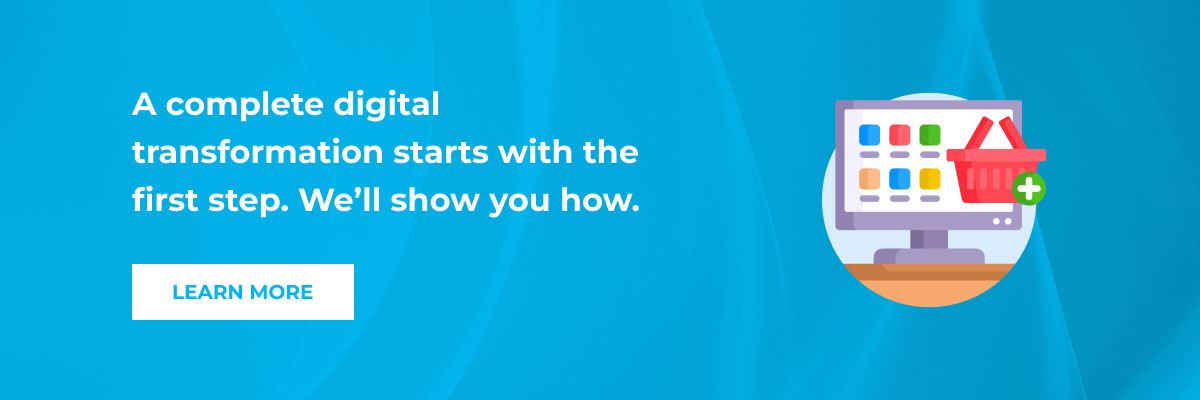
Collaboration isn’t just an activity that staff do every now and then. In order to get the most out of its effectiveness, collaboration has to become part of your company culture. When team members actively seek each other out to share insights and ideas, then you’ve succeeded.
Moreover, a culture where you seek to improve team collaboration also emphasizes decentralization. Instead of managers having to be on top of everything, responsibilities are spread out. Trust is placed in each employee that they’re using their time wisely.
As an indirect benefit, you also eliminate the suffocating feeling of micromanaging. If everyone’s already focused on a common goal, there’s no need to pressure them further.
There are 2 main ways that collaboration happens: synchronous and asynchronous.
- Synchronous teamwork means that employees are actively working together. They communicate via instant messages & video calls in order to update each other.
- Asynchronous teamwork is characterized by colleagues being in vastly different time zones. Not having the same opportunities to converse directly, it’s very advantageous to provide them with project management and issue tracking systems like Atlassian Jira.
Regardless of your case though, it’s always a great idea to make use of cloud storage. That way, you help enable collaboration by keeping documents, charts, statistics, project briefs and other important assets available to everyone, all the time.
It’s important to remember that people don’t always refuse to collaborate just because they don’t want to. Feeling as though your company isn’t encouraging you to play ball also drains motivation fast.
However, when you improve team collaboration the right way, you’ll benefit from:
Higher Productivity

Individually, each employee might be skilled; even highly skilled. Thing is, their abilities have to integrate in the bigger picture. For example, let’s say you’ve signed a web development contract. Within the contract, it states that the platform’s version 1.0 will be done in 50 hours.
It’s also written that additional debugging hours are to be discussed once the initial product is delivered. In order for everything to go smoothly, one of the best developers is assigned.
However, unaware of the terms of the deal, the developer works 70 hours.
They finish both the product, and debugging. After the fact, they’re surprised that it’s not actually a good thing.
Why? Simple. The client had only paid you for 50 hours. Since you never got to negotiate a deal for debugging, the company has lost time and money. What’s more, the developer feels treated roughly and unjustly.
All that, just because there wasn’t better communication & collaboration between sales, customer success, project management, and operational staff.
If team members would’ve just kept each other in the loop about project details and work progress, resources would’ve been used more productively.
Goal Alignment
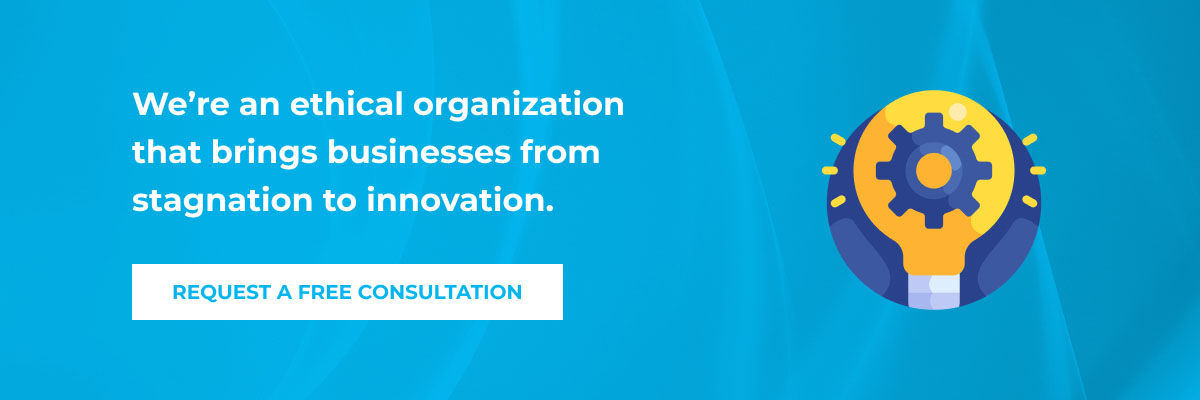
The more staff work together, the easier it is to see how tasks and duties eventually connect with each other. One great example here would be copywriters and web designers. When you’re planning a great website, they’re the 2 people who will impact UX the most.
However, the visuals and written parts have to match up. Additionally, they must serve the overall project goals and the vision of the product owner.
If those 2 professionals work completely separate from each other, you’re going to get a tangled mess essentially. The copy might not fit into the design, or the design might not have the needed visual elements to supplement the copy.
In worse cases, users could be reading one thing, but then have a whole other Call-to-Action. You need to improve employee collaboration so that they understand they’re working on a giant puzzle together. The pieces have to fit.
Streamlined Communication

One common culprit of collaboration problems is chaotic communication. Especially in a fast-paced environment, you need your staff to respect company processes and procedures. This becomes even more important when remote work is involved.
Don’t get us wrong; you can 100% establish great communication even if your teams are from different time zones. For example, at Wesrom, we’re spread across multiple continents.
Communication works great nonetheless because we’ve established from the get-go how collaboration should happen. For one thing, we use Atlassian tools to standardize the flow of information.
- Atlassian Confluence allows for swift project onboardings, and new employee onboardings. It’s great because you can sort knowledge very effectively. There are 2 components to it: “Spaces”, and “Pages”. A page is a document, and it belongs to a space (a category). Simple, effective, straightforward.
- For a software or web development project, you could combine Atlassian Bitbucket and Jira Software. Visual task allocation, comments with @tagging, branching & peer review options; the works.
Creating a work culture that’s built around collaboration has to be equal parts initiative, and palpable improvements. It’s great to train staff on new ways to share information (instead of long email chains and personal conversations), but even better if you give them the tools to do that.
When teams get on the same page, it’s irrelevant if they’re from the same time zone, or 3 time zones. Everyone knows their duties, their deadlines, and how their work connects with that of their colleagues.
Only then can we speak of truly cross-functional teams.
Top 16 Strategies to Improve Team Collaboration
It can be daunting to improve employee collaboration from scratch. So, we’ve prepared a list of some of the most recommended best practices. Regardless of your industry or company size, these are tips you should be looking to implement ASAP.
1. Define Expectations

If you’re an organization that values collaboration highly, you should make that clear straight from the recruitment interviews. Some people are more independent by nature, disliking working with others as a personal trait.
It is inefficient to hire new staff without discussing such an important aspect, only to find out afterwards that they’re not a good culture fit.
When people don’t don’t want to work together, they just won’t. It’s of little importance what you’d try to do in order to mitigate that. So, instead, we recommend you hire staff that have a natural affinity for teamwork, and then onboard them on your procedures.
Define baseline expectations. What’s the minimum standard that they have to respect? What are 3 behaviors that you simply cannot overlook as company, no matter what?
In order to increase the speed at which new habits are picked up, include them in your onboarding process. If you get HR on board, you can improve team collaboration way better. After only 1 week in the company, new hires will already have a solid understanding of expectations.
Similarly, give special attention to job descriptions. If an opening requires great social skills and constant collaboration with other colleagues, mention that. Don’t surprise employees after the fact, because it’s a big morale hit to have reality be way different from the job description.
One thing you can do is create a process that correlates positions. Exemplify and showcase visually how different roles are expected to work together. For even greater clarity, mention a few key responsibilities of each of those people.
Remember that “collaboration” has a reputation of meaning “oh, so I have to do all the work”. Make it clear what it means in your business.
2. Encourage Brainstorming
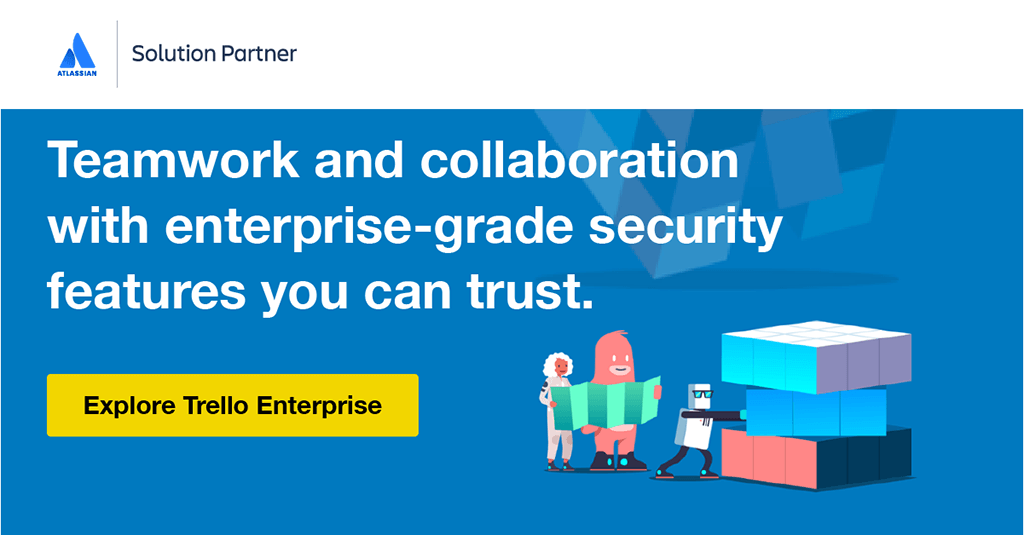
One of the core reasons why you should improve employee collaboration is the decentralization of initiative. Traditionally, operational staff would wait around for middle management to assign them tasks or duties. This is no longer the best way to proceed.
Moreover, empowering staff proactivity is not an exclusive idea for office jobs. Ideally, you’d want employees from both sides of the coin to understand the importance of initiative.
It doesn’t really matter if we’re talking about marketing specialists or construction workers. Collaboration is a mindset; a style of work. For example, in digital marketing, an SEO expert must ensure that a website is going to show up for relevant queries done on search engines.
One important factor that influences this is loading speed. Of course, loading speed itself is made of loads of other factors; which are dictated by web developers.
So, instead of your SEO specialist saying that a website was done poorly by the developers, you’d prefer they worked together, right? Here at Wesrom, our teams often start collaborating without needing top-down direction.
By using Slack channels, Jira and conference calls, cross-team colleagues can interact directly while still being completely transparent for project management purposes.
If roadblocks or better ideas come up during a project, they have the freedom and the means to act on them. Of course, you must always train your staff not to significantly overachieve either. Too much work without the knowledge of a manager can mean going past the approved budget.
Collaboration is basically a matter of proactive perspective. Let’s say you ask a few workers to move cement bags 3 floors up. Instead of doing the labor intensive work of carrying them by hand, they’d work together to create a pulley.
A way better solution with only minimal resources.
3. Appreciate Feedback
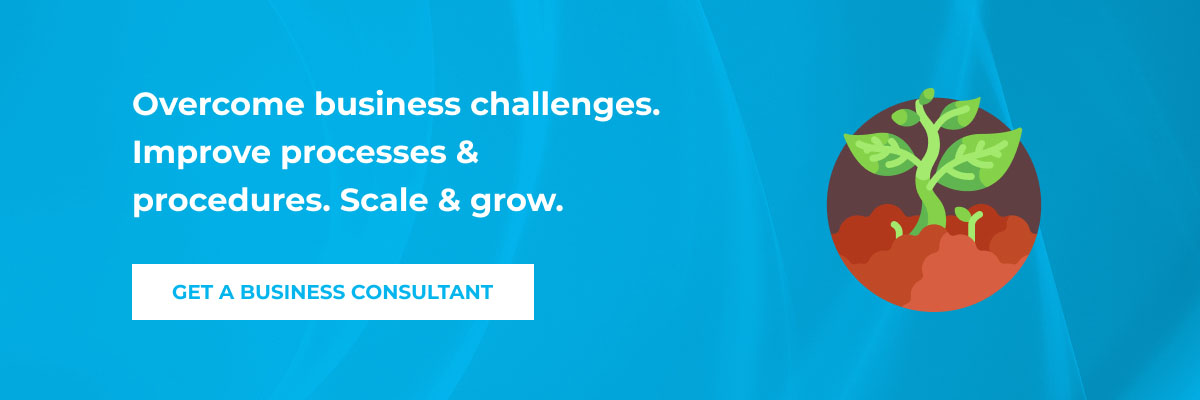
It’s a common corporate trend nowadays to ask for employee feedback. And don’t us wrong, that’s great! We encourage as many companies as possible to do it. That’s exactly how you improve team collaboration long-term.
Here’s the thing though: you have to actually be open to all of that feedback too. Both the positives, and the negatives.
You can reinforce your value of open communication and team collaboration during staff meetings. Wherever you reach important points about a project, a process update, upcoming changes, etc, ask for feedback. Hear out everyone who wants to voice their opinion.
Sure, sometimes you won’t get anything of value. But other times, there will be amazing points which you just didn’t think of.
For that to happen though, you must prove that your company is a safe environment for expressing personal thoughts. If employees are afraid of potential repercussions for criticizing standard procedures or business policies, they’ll never do it.
And, that’d be a real shame. Workplaces should be filled with mutual support. You need your staff, and they need you. So there’s no reason to enforce a rigid hierarchical structure where there are definite and/or immovable “rights” and “wrongs”.
Trust takes time to form; and it’ll take a whole lot longer if employees don’t feel at ease sharing their perspectives. Additionally, this feeling can affect collegial relations too.
No one’s perfect, and everyone makes mistakes. If one team member notices that a colleague made an error, they should tell them! Instead, these occasions are oftentimes ignored because of misguided fears of hurting someone’s feelings or being yelled at.
Try to highlight that you’re not out to punish individual mistakes or condemn reasonable negativity; only to improve your company as a collective.
4. Build & Support Trust

If you want to improve team collaboration, you need to help employees understand each other’s strengths and weaknesses. This way, they’ll form almost a “reflex” of sorts about when they need someone’s help.
For example, if a sales expert isn’t sure how a contract with a foreign client would be signed, they should just get in touch with the legal team.
And while that makes perfect sense, it’s not always just as easy to think about it at a moment’s notice. If the sales agent would be asked by a foreign lead some specific legal details during a call, they might be prompted to just give a ballpark answer.
However, that’s not recommended. Sure, it might move the lead down the pipeline right then. But they’d actually become even colder if they’re told something else down the line (after consulting with legal).
That’s just one of the many reasons why staff should try and understand what they’re good at, what others are good at, and then they should be asking for help.
After all, what’s the point of having multidisciplinary teams if they’re not going to talk to each other?
Another blocker might be that some employees are afraid of being ridiculed or looking foolish. So, they refrain from asking questions or seeking advice. Remind everyone that this is completely counterintuitive.
Asking questions should be appreciated! It shows genuine care and desire to learn. Whenever colleagues can help each other, they should be taught to do so with respect, patience, and understanding. In time, this’ll solidify a bond of trust.
5. Create a Real Meaning
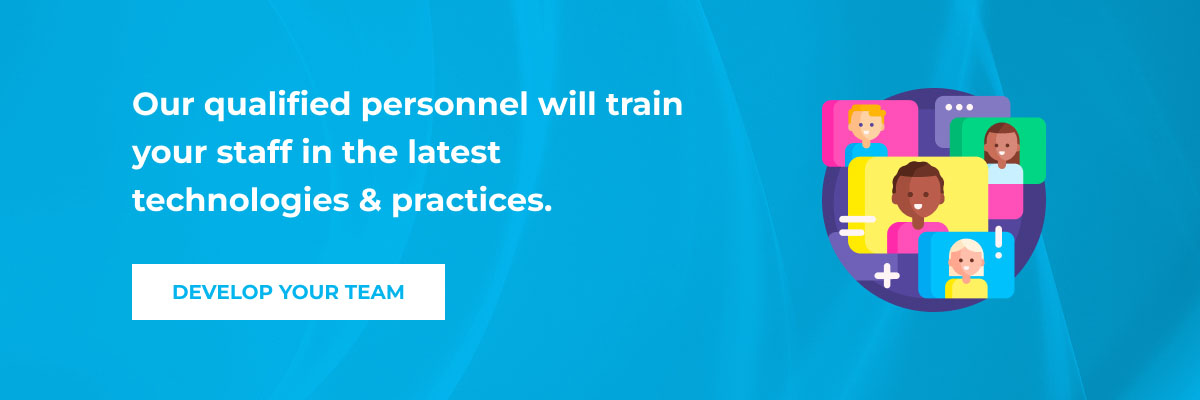
A vast majority of people work to get their paychecks. They might actually agree with your company values, with your mission, your vision, your policies, sure. However, this simple truth will always stay the same in most cases.
Still, if you’re not even going to try and create a purpose behind the salary, cynicism will form much quicker. Fundamentally, humans band together because of common causes and beliefs.
You need to provide that. A reason why what your business does is important in some way. How you plan to give back to your community after reaching certain objectives, etc.
For example, at Wesrom, we aim to help other ethical organizations leave an ever-greater positive impact. That’s what differentiates us from other marketing & development agencies. We set high standards for who we are as a company, as well as who our clients have to be.
We take this philosophy and integrate it into our recruitment process. Thanks to that, our candidates are like-minded individuals who are going to improve team collaboration.
Whatever project they’re working on, our staff have the certainty that their work is going to help someone, somewhere, somehow; in a real way. It’s not just about generating higher profits for the client, but how the products or services of that client impact the everyday lives of others.
We improve employee collaboration by giving them something tangible to believe in and to work towards. The paychecks are how we reward their dedication to our mission; to their mission.
6. Centralize Project Communication

You simply can’t improve team collaboration without streamlining specific communication. Moreover, it really doesn’t matter what kind of work arrangements your teams have. They could be working from a company office, completely remotely, or have a hybrid schedule.
In fact, you can let members do whatever feels best for them (either work in-office or from home). At the end of the day, it’s all about understanding how to leverage online coordination tools.
Here’s the thing: even if all of your staff were in a brick and mortar office, what would be the baseline of collaborative behavior? Shouting information from one desk to the other? Hopefully not!
Realistically, they’d still use email, Google Drive and instant messaging; especially if you were in a building with multiple levels.
So, you should skip ahead a few steps and provide digital solutions built around convenience & efficiency. Dozens of top-dollar companies across the world use Atlassian software to improve employee collaboration.
- Use @mentions and in-line comments to share information, updates and feedback with maximum relevance.
- Create detailed yet easy to understand documentation. Share it with a few clicks.
- Access your tools anytime, from anywhere, from multiple devices (including bespoke mobile apps).
- Empower transparency & trackability with intuitive task assignment and project management.
- Understand statuses at a glance thanks to kanban and scrum boards.
A complete digital transformation is simply the way to go with your communication. As trusted Atlassian partners, we can handle everything for you: acquisition, implementation, data migration, training, maintenance, etc.
Are you an SMB? Choose cloud hosting. In a big enterprise? We can also set up your personal data center. Just let us know what you need.
7. Emphasize Professional Achievements
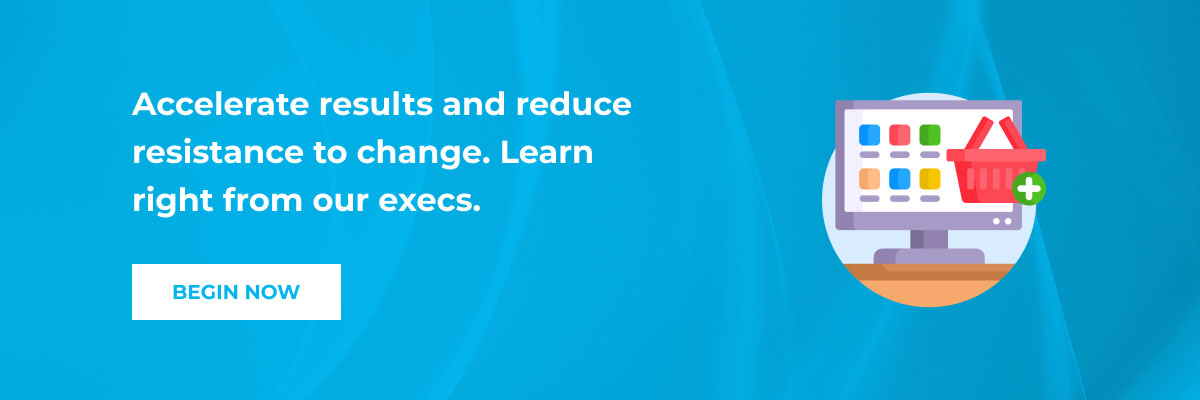
A lot of people tend to focus on their shortcomings. In fact, sometimes it might seem as though they’re only seeing their own weaknesses. This is a problem because of 2 reasons:
- Low self-esteem will cause a person to produce lower quality results, even if they are actually capable of much more.
- The self-perception of weakness and ineptitude can also translate to colleagues. If a team member is seen as blatantly bad at their job, others will actively avoid them.
We’ll go on a whim and assume that you don’t keep unskilled personnel around (or they’re currently in training). So, what you need to do is showcase the achievements of a troubled employee both to themselves, and to others.
Thing is, even when a turbulent employee has great results, they’ll likely write them off and take away their own victory. Long-term, other staff will start viewing them as “nothing special” too. And there’s no real reason to actively seek collaboration with someone “mediocre”, is there?
In order to counteract this, you should do company-wide announcements of good results. Clients being satisfied with your services (and which team provided them); new certifications or skills being picked up by team members; promotions, etc.
You can save these news for a regular all-hands call, or (the better option) make them part of a bi-weekly internal newsletter. Confluence already has a template for this actually.
8. Set Team Goals

Another way to improve team collaboration is creating objectives that can only be reached as a team. For example, if you’ve undertaken a software development project, then the whole team’s goal could be to have a prototype ready in a maximum of X days.
Obviously, multiple skill sets and experts are needed to have a software product functional. So, if you simply bring employees up to speed on the overall goal, they’ll be “forced” to work together.
It might sound a bit bad, but it’s actually a good practice; as long as you hold people responsible as a group. The idea is that an individual task-centric mentality isn’t very helpful. If everyone’s focusing only on their own workloads, you’ll probably get a result like this:
- A software project roadmap is finalized.
- The team is onboarded on goals, milestones, and deadlines.
- Tasks are created and assigned to specific employees.
- Some of those tasks will eventually get stuck in QA, DevOps processes, or bug fixing.
- You’ll miss deadlines, and the client will grow increasingly weary.
- Eventually, the contract is terminated or “paused”.
To counteract that, establish a company culture that rewards personal responsibility. For example, if a task has been in QA for 2 weeks, the developer shouldn’t just forget about it until they’re given feedback. Instead, they should follow-up with the QA specialist.
Think about it: after QA, there will likely be bugs to fix, so it’s not like the developer’s job is done either. It’s simply on an indefinite pause, until they get that feedback.
However, many employees are tempted not to take the initiative because they have the “well I did my part” excuse to fall back on.
If one part of the process fails, the entire team fails. Remind that to your staff.
9. Respect Expertise & Experience

Everyone’s looking for a well-paying job, but that’s no longer the only important criterion. The millennial workforce especially want to feel genuinely appreciated by their employer. They need to know that the job they’re doing is seen and respected.
If you don’t give your staff the opportunities to showcase what they consider to be core personal strengths, you won’t improve team collaboration.
Thing is, employees want to add value to organizations too. They want to thrive in roles that allow them to stand out; to impress colleagues, superiors and clients. But, they can’t do that unless you assign them tasks they can excel at. It all starts with job offers.
Be very careful to add everything that a candidate should have in order to qualify. For example, if they need to work together with others on a daily basis, you have to say that. Not everyone is born a communicator, or confident when talking to others.
When an employee is filling a position that doesn’t cater to their abilities, you’re stifling their potential. As a result, they’re going to slow down the team.
A collaborative environment depends on each member doing what they’re actually good at. If you have a really good Google Ads specialist, don’t assign them to Facebook Ads just because you want Facebook Ads.
They’re not going to perform, because it’s not their field. Down the road, you won’t get as many leads. So, you might think that the problem lies with the copy of the ads, because you have a great specialist setting up the technical side.
Ultimately, you get both a disgruntled PPC specialist, and an angered copywriter. Just because they weren’t allowed to utilize their skills the right way.
10. Don’t Force Collaboration

You have to encourage teamwork, but you can’t make it happen artificially. The more you keep pressing someone to do something, the likelier it is that they’re not going to. Even if otherwise they might have considered it a great idea!
Ultimately, to improve employee collaboration, you need to let it be their choice. Your role is creating a bridge between team members; to create that sense of community and mutual reliance.
If people feel forced into working with someone else, they will try to avoid it as much as possible. Furthermore, not all tasks even require collaboration. Even in industries that highly depend on cross-functional teams, independent work happens a lot.
Both management and operational staff have to understand when teamwork is needed, and when it’s a hindrance.
For example, having a daily huddle where you just list the day’s tasks is a good form of collaboration. Together with the team leader, departments can determine if they need to cooperate on anything on that day.
However, a second daily huddle at the end of the day would be disastrous. Its only real effect would be to demotivate and annoy employees with what would feel as meaningless talk. And honestly, it would be.
You can easily give a status update on the morning huddle too.
Alternatively, if your organization promotes more initiative and employee freedom, let them choose for themselves when collaboration is needed. Colleagues can always just message each other on collaborative software, or request feedback on Jira cards.
11. Automate Menial Tasks

Some tasks are just less glamorous than others. What’s worse, they’re often repetitive in nature. However, even though they’re unwanted, they’re needed. For example, parsing through a digital marketing campaign data just to make a report is pretty tedious and boring.
But without doing that, you have no idea if it can be considered a successful campaign or not. Similarly, stakeholders are going to want reports, data, statistics. It’s normal to request those.
Regardless of your business’s recurring tasks though, there’s probably a way to automate them. The Atlassian stack has a lot of useful features that your teams are definitely going to appreciate.
Incident management, project management, collaboration tools; all of these and more are available in customizable packages that allow you to enable exactly the experience you want. This’ll free up the timetables of staff, letting them do more valuable activities instead.
Consequently, they will have enhanced availability to respond to inquiries, offer help, and just improve team collaboration overall.
As an added benefit, it’s just going to make their lives easier too. Because tasks will become simpler through automation, they’ll need less effort. So, the chances of burnout get significantly lower. Moreover, you can get more done even with last minute requests.
Does a client want to know all the tasks currently being worked on? Great, just automatically create a report of tasks in the “In progress” column of your Jira kanban board.
12. Connect Employees & Managers

While each team leader will have their leadership style, you can set a few company-wide parameters. This can help avoid scenarios where staff willingly create a divide between each other.
For example, in an office setting, create an open door policy. This is quite literal; managers, supervisors, executives, and other middle & top personnel leave the door to their office open. This signifies that everyone’s welcome at any point to speak their mind.
An open door policy encourages more questions, suggestions, and problem resolution. It shows that management is there to help create a great work environment for everyone.
That’s how you create mutual respect, which in turn will drive employees to improve team collaboration.
In a remote work setting, create a simple rule that managers should always be seen as available for discussions, unless they set a “do not disturb” status. This blockage of “focus time” can be done in Google Calendar, on an instant messaging platform, or even on both.
That way, employees will know with only a glance when they can talk to their superior. One type of conversation which is extremely helpful is bouncing ideas back and forth. Sometimes, staff will be able to overcome the blockers they’re facing by just voicing their thoughts and figuring out a solution as they talk.
This type of open collaboration can bring people together and form strong relationships, even if they’re initially separated by a business hierarchy.
In fact, if you promote this culture of collaboration between employees and managers long enough, the associated negative sides of the relationship will start to fade.
13. Organize Social Activities

Especially in upper-middle organizations and enterprises, people will often see each other as just a job title. You can’t really blame them, because time is always becoming more and more limited. Thing is, we collaborate better with colleagues that we actually like.
While watercooler conversations will probably get you there, it’d take a long time for significant relationships to form. That’s why team buildings are a classic choice for many companies.
There are a lot of advantages to taking your staff and admittedly forcing them to spend time together for a few days. However, the downside is some people will only see the downside; that restriction of freedom and liberty to do whatever you want with your own time.
So, instead, your first priority should be to make these occasions optional!
You can’t improve team collaboration by imposing mandatory non-work activities. On the contrary, it’s a choice that would create tension and false behaviors between staff. They don’t want to be there per say, but they’ll “wear” a smile anyway.
Here’s the alternative: every now and then, offer to pay a night out for whoever wants to partake. A pizza party, karaoke, bowling, tabletop games & drinks, video game competitions, etc.
You could even create an event calendar where people “sign up” for activities ahead of time (so that you’ll know about how much it’s going to cost you).
Realistically though, keep in mind that the adverse effect of your intention is possible too. As people get to know each other better, they might just start disliking each other too. That’s just the nature of life though.
So, if you notice 2 team members don’t really get along, try to assign them on the same projects.
14. Reward Innovation
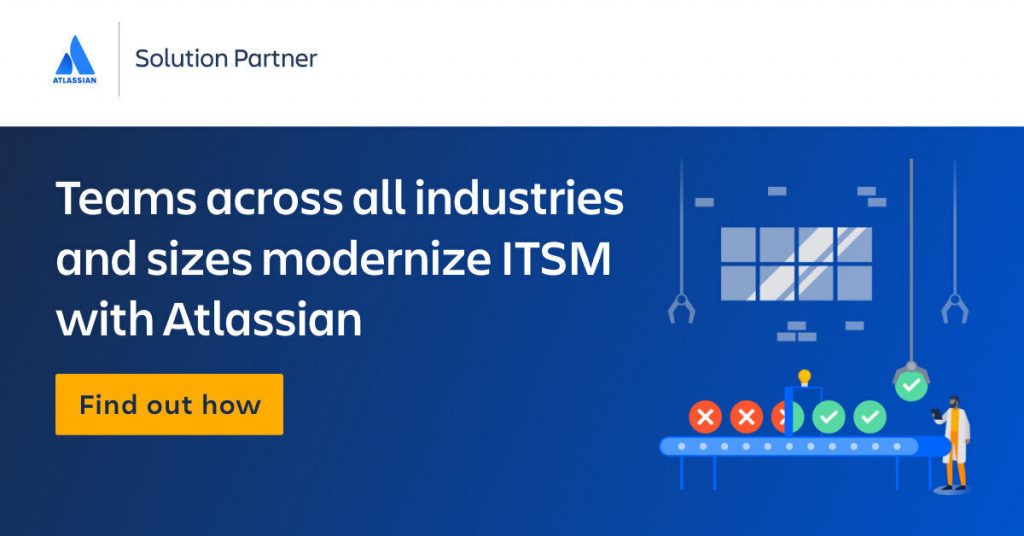
Just because you’ve been doing something for a long time, it doesn’t mean it’s the best way to do it. To improve team collaboration, you must also take a step back and ask yourself: “is my only argument that we’ve just always done it this way?”.
If your answer is “yes”, then it’s time for a change of procedures. Your first priority should be talking with the new hires of your organization. They’re bringing a fresh perspective, new experiences, new styles of work.
Ask them how they used to operate at their former company. What practices or tools would they like to be given here too? Is there something that their former employer was doing better? Don’t be afraid to admit that you have improvements to make; it actually takes vision to do so.
Similarly, if an employee comes forth with a suggestion, then they should find an open ear. Make it crystal clear that your company culture endorses proactive staff.
For example, one employee might have ideas about how to improve task allocation and tracking. Remember that your designers, copywriters, developers, accountants, sales agents, etc, are the actual “boots on the ground” personnel.
It doesn’t matter if a process looks good on paper, if it doesn’t work in practice. This kind of feedback is highly valuable, because it comes from direct experience.
Make sure to run it by multiple people as well. Don’t silo yourself or consider your judgment absolute. After all, to fully improve employee collaboration, you must be open to it too.
15. Schedule One-on-One Time

Strategizing is always the first step, but as a leader in your company (or even the founder), you must also show that you want to improve team collaboration directly. It’s not a plan for other people to follow, it’s a true culture for everyone to follow; including you.
Leaders are the people who have to showcase their willingness to collaborate first and foremost. One tactic that gets that message cross fast is having one-on-one meetings with staff.
These dialogues are amazing opportunities to understand each team member better. What drives them, what they like, what they dislike. Remember that a business must also cater to the needs of its people; and who better to tell you what those are than the people themselves?
Of course, just because someone tells you that they’re not a fan or X or Y process, it doesn’t mean you should change it ASAP. But, if the subject comes up enough times, it’s definitely worth looking into. Similarly, these conversations are perfect to find out if there are any conflicts in the workplace.
For instance, many (if not most) people will be reluctant to scrutinize their immediate superiors, for fear of repercussions.
However, if you prove that any critique they have will be guaranteed anonymity and will be pursued professionally, it’s another reason for the employees to stick around in the company.
Moreover, they’ll see that management is willing to directly collaborate with them to fix daily and long-term issues. If you make a promise though, make sure to keep it! You can only improve employee collaboration in your company as long as you also deliver on what you say.
If you’re in a big enterprise, then you can try personal emails instead. Email employees and ask for feedback.
16. Promote Learning from Mistakes

As the saying goes, mistakes happen. Even with the best training, the most skilled professionals, the greatest of intentions, mistakes still happen. What you can control is how the leadership team reacts to them.
- Negativity and harsh punishments are going to demotivate and create communication barriers.
- Positivity and an attitude of learning and improving from mistakes will solidify a collaborative culture based around teamwork.
The only worse thing than severely reprimanding a mistake, is doing so publicly. Calling out employee failures among their colleagues is going to shut them off from the group almost surely. Not because the others will have a bad opinion of them; but because the scolded employee will be ashamed to face their peers after that.
Furthermore, it’ll damage the reputation of the manager too. If staff see that it’s acceptable for managers to just bring you down for any mistake, they’ll be reluctant to collaborate with them. And that’d be a huge roadblock when you’re trying to improve team collaboration.
Granted, you don’t want to just let someone that made a mistake get off the hook. It’s not constructive to have a “no consequences” business culture either. So, instead:
- Don’t try to find a culprit. Ask the team or the assigned person what they think caused the problem. Was it something that was done, or that wasn’t done?
- Request solutions. The damage is already done, but how can it be avoided in the future? Let teams develop their own problem solving skills.
- Ask if there’s anything that the team would’ve needed from you. Show that you’re always willing to provide and to help.
Ultimately, mistakes don’t happen just because of 1 person. So, it’s not productive to spend time assigning blame anyway.
6 Useful Team Collaboration Tools
Jira Software

- Team collaboration tool for software & web development projects.
The only way to properly handle development projects nowadays is with Agile project management methods. Jira Software is a collaboration, issue tracking, task assignment and progress tracking tool specifically for development professionals.
2 of its main features are the kanban boards and the kanban and scrum boards. By planning, tracking and assigning tasks visually, everyone is kept in the loop with only a few clicks.
Moreover, all iterations of Jira support on-ticket comments and tagging. It literally can’t be easier to provide updates, ask for help, or pass tasks to another colleague.
Additionally, Jira Software also has accessible analytics, report templates, a huge amount of native and third party integrations, and features for planning sprints. Learn more about Jira Software.
Jira Work Management

- Team collaboration tool for dynamic and cross-functional business teams.
Think Jira Software, but with the more technical features stripped away from it. Jira Work Management is a bespoke tool for business teams (HR, finance, marketing, etc) that’s available in both cloud hosting and personal data center format.
It helps streamline workflows, create transparency, and finish deliverables way faster. At its core, JWM increases operational efficiency in all ways imaginable. For example, it has simple to understand project roadmaps that define goals and encase them in time-limits.
Learn more about Jira Work Management.
Jira Service Management

- Team collaboration tool for high-velocity IT teams.
Are your IT experts struggling to keep up with the amount of support tickets and maintenance duties? Jira Service Management is an all-in-one solution: it provides a service desk, a self-help portal, a kanban board, task allocation & priority assignment, and more!
The whole product is very visual, with the user interface being easily navigable with almost no training.
IT personnel have multiple queues and request categories, being able to sort priorities swiftly and efficiently. Whether your ITSM teams provide help to customers or other staff (or both), JSM is the way to go.
Learn more about Jira Service Management.
Confluence

- Team collaboration tool for the entire organization.
The first step to improve team collaboration is to redefine how information flows in your company. WIthout access to the knowledge that they need, employees just can’t do their duties effectively. Additionally, lack of information also leads to goal misalignment and overall miscommunication.
You can think of Confluence as a better version of Google Drive. Instead of having folders that you need to manually search for (and then filter through all the documents), Confluence arranges everything for you.
First of all, there are “Spaces”. For example, a Space can be a project. It is basically a category, an option from a menu. Then, there are “Pages”. These are all the documents within a Space.
Everything is very visual and simple to use, and you have full control over access rights. What’s more, team members can also contribute to Pages, or leave comments to ask for clarification.
There are loads of templates too, so you most likely won’t have to design anything from scratch. Lear more about Atlassian Confluence.
Opsgenie

- Team collaboration tool for IT and development teams that rely on always-on services.
Manually keeping track of software and web services alerts & notifications is not only stressful, but also a complete waste of time. A majority of custom apps, APIs, etc send emails for any status update; it doesn’t mean that they’re not working anymore or there’s a temporary error.
Eventually, ITSM personnel will get tired and overwhelmed by having to continuously monitor all of those emails. What will likely happen is that they’ll start ignoring their email inbox, and focus on daily duties.
So, when a critical alert is sent, no one’s going to be aware of it. In comes Opsgenie, an automated solution that centralizes important notifications in a single place.
In fact, Opsgenie also contacts all relevant on-call staff, letting them know what’s occurred. If there’s still no response given, the platform automatically escalates the issue. Learn more about Atlassian Opsgenie.
Bitbucket

- Team collaboration tool for Agile and cross-functional development teams.
Both software developers and web developers should only code on a distributed version control system (such as GIT). The benefits are many, such as: local repositories, branching, peer review, simple DevOps, etc.
However, in order to achieve its full capabilities, GIT has to be paired with a platform that supports cloud-hosted (or data center) collaboration on code. Bitbucket is a secure, fast and reliable option for storing the global repository, creating pull requests, and managing master branches.
Even better, Bitbucket natively integrates with other Atlassian tools, and has dozens of other third-party integration options.
Learn more about Atlassian Bitbucket.
Ready to Improve Team Collaboration?

At Wesrom, we’re trusted Atlassian partners. Whenever you decide to get any of the solutions above implemented in your organization, just let us know. We’ll handle acquisition (with a special discount!), complete setup, data migration, and even staff training.
We use Atlassian software ourselves, and it has helped us save tremendous time & effort again and again.
However great you may be at employee collaboration as an organization, it’s always best if you also have an IT infrastructure that supports it. Get in touch as soon as you’ve decided to improve; we’re eager to get to know you!